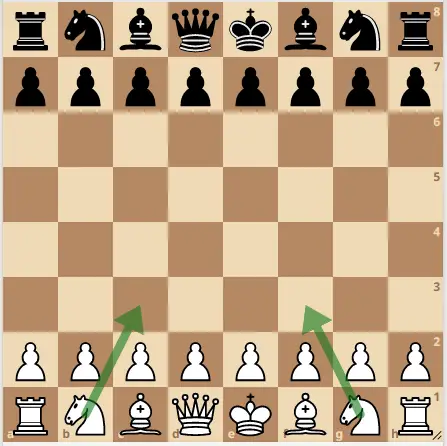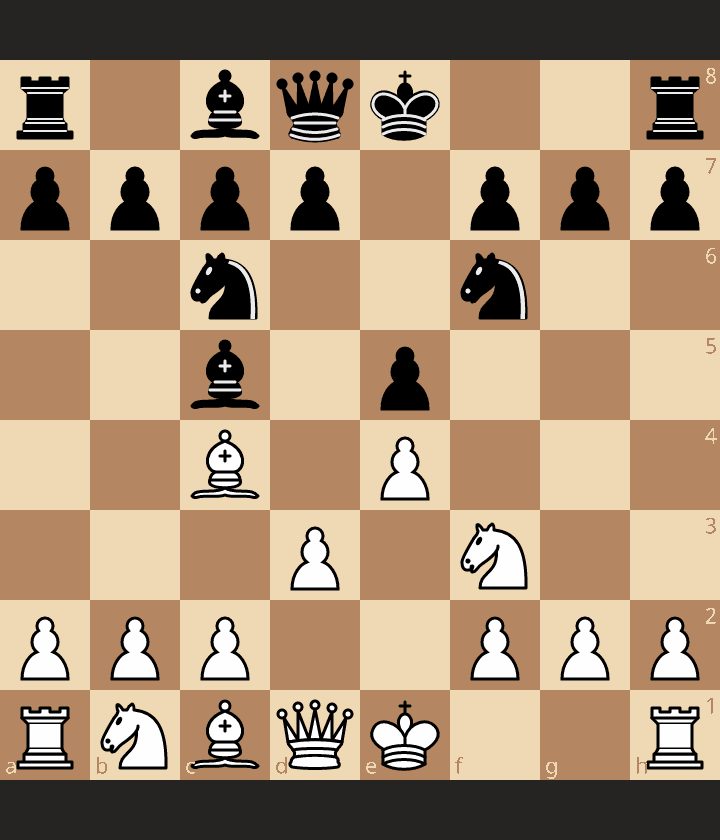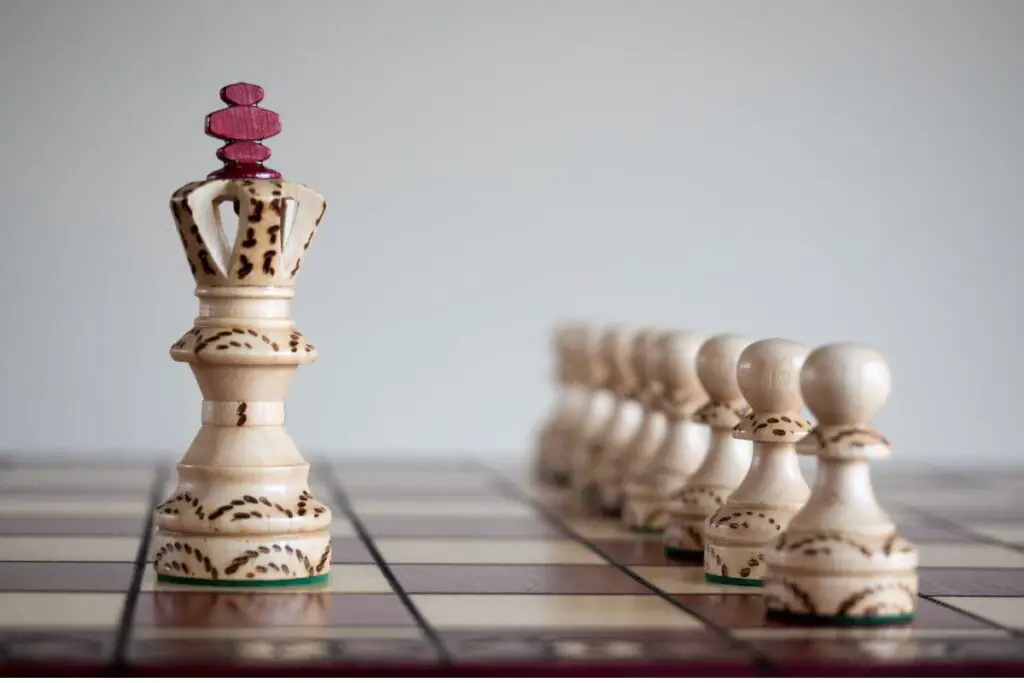The king is the most important piece in chess since checkmate ends the game. When starting out in chess, it’s vital that you understand how the king moves if you wish to advance in your chess studies.
One common question asked by many beginner players is “Can the king jump over pieces in chess?
Can the king jump over pieces in chess?
The king cannot jump over pieces in chess unlike the knight. The king can only move one square in any direction provided that the square the king moves to is not occupied by your own piece. It is also illegal for you to move your king onto an endangered square.
In the starting position below, the white king cannot jump over its own pawns on the second rank. However, the knights on b1 and g1 can advance to the 3rd rank by jumping over its own pawns as indicated by the green arrows.

How Does The King Moves?
The king moves one square forward, diagonally, backward or sideways. It can never jump over pieces on the chess board. The king captures the same way it moves. Therefore, if an enemy piece is next to the king, then you can capture that piece as long as the enemy piece is not protected by another one of your opponent’s piece(s).
The white king can move in any direction as indicated by the green arrows. The white king can also capture the black bishop

What Piece Can Jump?
The knight is the only piece in the royal family that has the ability to jump over other pieces. The knight moves in an L-shaped manner. In other words, it moves one square and then 2 squares at a right angle (vice versa) to form an L.
In the position below, the white knight can jump to e2, b5, e6, and f5.

The knight can jump to a total of 8 squares. Can you figure out the rest of possible squares the knight can jump?
Why The King Is Not Allowed To Jump Over Other Pieces?
The king is the most important piece in the game of chess, and its origins can be traced back to the ancient Indian game of Chaturanga. The king piece was known as the “rajah” in Chaturanga and represented the king of the army.
When the game of Chaturanga was adapted into chess in Persia during the 7th century, the rajah piece was renamed the king.
The king’s movement was also modified to be less powerful than in Chaturanga, as it was believed that making the king too powerful would make the game too easy. Therefore, it wouldn’t be a good idea to have the king jump over other pieces as it could easily escape checkmate, perhaps making the game of chess last indefinitely.
In chess, the king is able to move one square in any direction, including diagonally. The king is also able to perform a special move called “castling,” which allows the king to move two squares towards a rook, and the rook moves to the square on the other side of the king.
Castling with the king and rook (gif)

The game of chess evolved over time, and the role of the king became more important as the game became more complex. The king’s importance is emphasized by the goal of the game, which is to checkmate the opponent’s king, or put the king in a position where it is under attack and cannot escape capture.
In summary, the king in chess has its origins in the ancient Indian game of Chaturanga, where it was known as the rajah. The king’s movement was modified when the game was adapted into chess, and it is now able to move one square in any direction and perform a special move called castling. The king is the most important piece on the board, and the goal of the game is to checkmate the opponent’s king
The Jumping Knight (Brief History)
The knight is one of the pieces in the game of chess and is considered one of the most unique pieces on the board due to its distinctive movement pattern. The history of the knight’s movement can be traced back to the game’s origins in ancient India.
The game of chess was originally called Chaturanga and was played in India during the 6th century AD. Chaturanga had four pieces, which represented the four branches of the Indian army – elephants, chariots, horses, and foot soldiers. The horse piece was called an “ashva,” which could move in an L-shaped pattern. This piece was eventually adapted into the game of chess as we know it today, and became the knight.
The modern version of the knight’s movement was established in Europe during the Middle Ages. Knights were considered the elite soldiers of the time, and the game of chess was a reflection of medieval warfare. The knight’s unique movement pattern was designed to mimic the way a horse could jump over obstacles on the battlefield.
The knight moves in an L-shape, two squares in a straight direction and then one square perpendicular to that direction. This movement allows the knight to jump over other pieces on the board, making it a valuable piece for attacking and defending.
In summary, the knight’s movement pattern in chess can be traced back to ancient India, and was adapted into the modern game during the Middle Ages in Europe. The unique L-shaped movement was designed to represent the way horses could jump over obstacles on the battlefield, making it an important piece in medieval warfare and in the game of chess.
Final Thoughts
The king is the most valuble piece as checkmate marks the end of the game. Therefore, it’s important that you protect you king at all times. It is the single most important thing to do in a chess match.
The king can never jump over other pieces in a chess game. This would make the game far too complicated, perhaps making it impossible to deliver checkmate.


